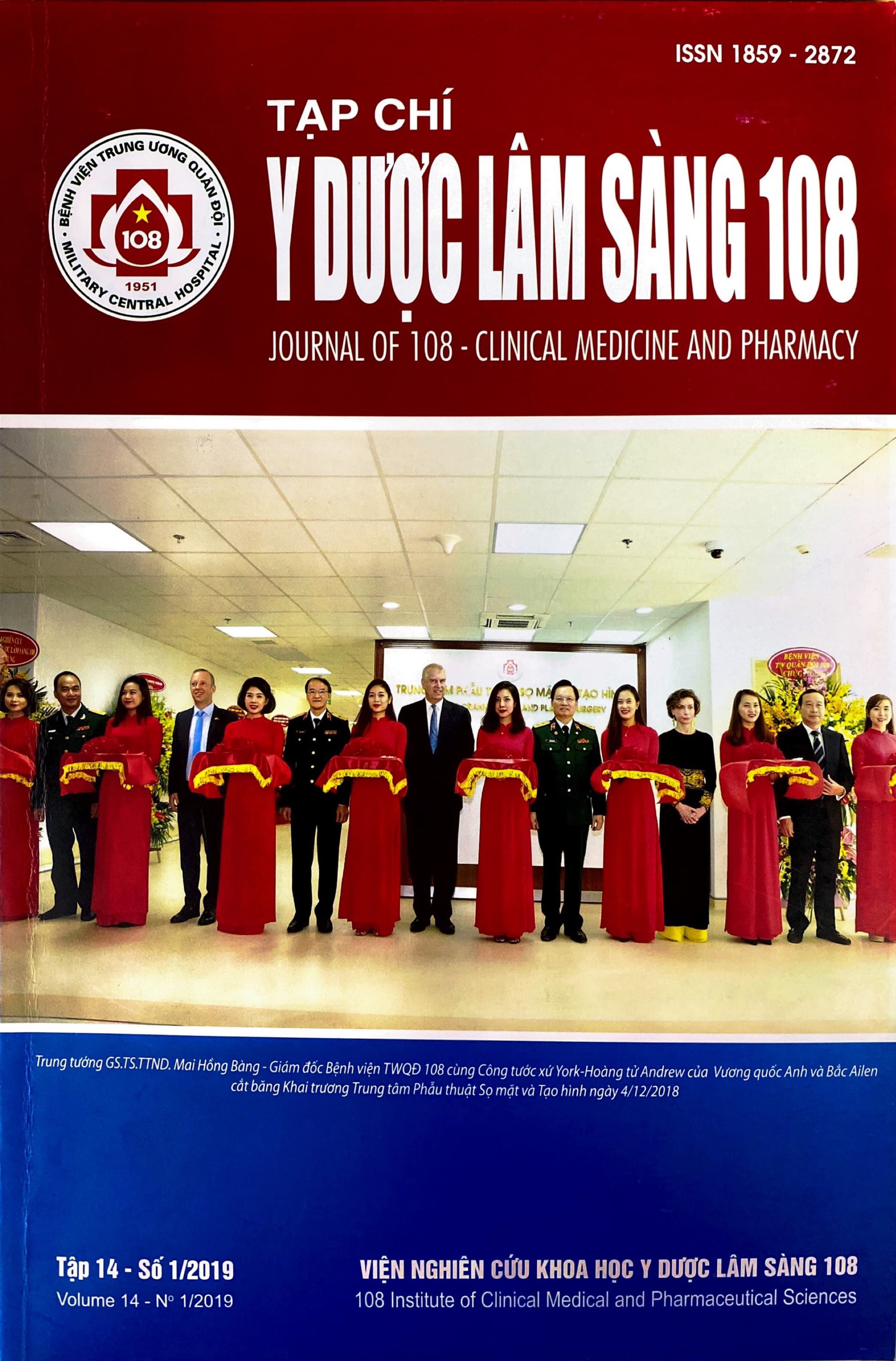Nghiên cứu chức năng tâm thu thất trái bằng siêu âm tim đánh dấu mô ở bệnh nhân sốc nhiễm khuẩn
Main Article Content
Keywords
Tóm tắt
Mục tiêu: Đánh giá chức năng tâm thu thất trái ở bệnh nhân sốc nhiễm khuẩn bằng siêu âm tim đánh dấu mô. Đối tượng và phương pháp: Nghiên cứu tiến cứu, mô tả cắt ngang trên 90 bệnh nhân sốc nhiễm khuẩn và 37 bệnh nhân nhiễm khuẩn huyết theo tiêu chuẩn của Hội Hồi sức châu Âu (SCCM/ESICM) năm 2016, điều trị tại Khoa Hồi sức tích cực - Bệnh viện Trung ương Quân đội 108 từ tháng 6/2017 đến tháng 12/2018. Tất cả các bệnh nhân được làm siêu âm tim và siêu âm tim đánh dấu mô ở thời điểm 24 giờ đầu sốc nhiễm khuẩn. Kết quả: Chỉ số sức căng dọc toàn bộ thất trái ở nhóm sốc nhiễm khuẩn cao hơn có ý nghĩa so với nhóm nhiễm khuẩn huết (-14,6 ± 3,3% so với -17,1 ± 3,3%, p<0,01). Không có sự khác biệt về phân số tống máu thất trái ở 2 nhóm (p>0,05). Kết luận: Siêu âm tim đánh dấu mô có thể phát hiện sớm rối loạn chức năng tâm thu thất trái so với siêu âm tim thường quy.
Article Details
Các tài liệu tham khảo
2. Basu S, Frank LH, Fenton KE et al (2012) Two-dimensional speckle tracking imaging detects impaired myocardial performance in children with septic shock, not recognized by conventional echocardiography. Pediatr Crit Care Med 13(3): 259-264.
3. Dalla K, Hallman C, Bech-Hanssen O et al (2015) Strain echocardiography identifies impaired longitudinal systolic function in patients with septic shock and preserved ejection fraction. Cardiovasc Ultrasound 13: 30.
4. Geyer H, Caracciolo G, Abe H et al (2010) Assessment of myocardial mechanics using speckle tracking echocardiography: Fundamentals and clinical applications. J Am Soc Echocardiogr 23(4): 351-369, quiz 453-455.
5. Miller RR, Dong L, Nelson NC et al (2013) Multicenter implementation of a severe sepsis and septic shock treatment bundle. Am J Respir Crit Care Med 188(1): 77-82.
6. Ng PY, Sin WC, Ng AK et al (2016) Speckle tracking echocardiography in patients with septic shock: A case control study (SPECKSS). Crit Care 20(1): 145.
7. Shahul S, Gulati G, Hacker MR et al (2015) Detection of myocardial dysfunction in septic shock: A speckle-tracking echocardiography study. Anesth Analg 121(6): 1547-1554.
8. Singer M, Deutschman CS, Seymour CW et al (2016) The third international consensus definitions for sepsis and septic shock (Sepsis-3). Jama 315(8): 801-810.
9. Sturgess DJ, Marwick TH, Joyce C et al (2010) Prediction of hospital outcome in septic shock: A prospective comparison of tissue Doppler and cardiac biomarkers. Crit Care 14(2): 44.
10. Yingchoncharoen T, Agarwal S, Popovic ZB et al (2013) Normal ranges of left ventricular strain: A meta-analysis. J Am Soc Echocardiogr 26(2): 185-191.
 ISSN: 1859 - 2872
ISSN: 1859 - 2872
